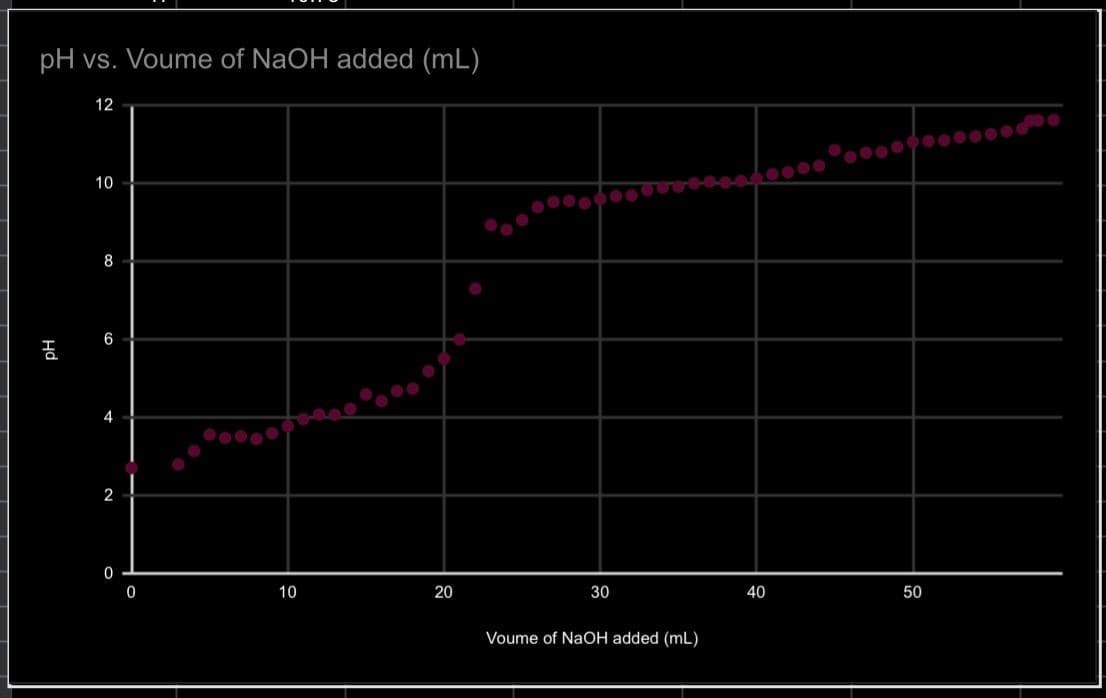a buffer solution is often encountered during the titration of a
weak acid. In such a titration, there is a strong base (often sodium hydroxide, as in today’s lab)
which is being added to the weak acid. When the strong base reacts with the weak acid, the
result is the conjugate base of the weak acid. It is essential that you not confuse these two
bases during the discussion below, and that you write your report so that it is clear which base
you are talking about. If the pH of the acid solution is monitored during the titration, a pH
profile like the one below can be plotted. For monoprotic acids it will be sigmoid in shape:
The Henderson-Hasselbalch equation helps to make sense of this curve (the base referred
to is the conjugate base of the weak acid).
pH = pKa + log ([base]/[acid])
If calculations are desired, two points are particularly important. The first, at the steepest point
of the graph, is the equivalence point. At that point the acid has been completely consumed by
the strong base being added, thus it can be used to stoichiometrically calculate the moles of
acid initially present.
The other important point is the half equivalence point. Notice in the Henderson-
Hasselbalch equation that the pH equals the pKa when the concentration of the weak acid and
its conjugate base are equal (since [base]/[acid] equals one, and the log of one equals zero).
The weak acid and its conjugate base are equal in concentration when exactly half of the weak
acid has been neutralized by the strong base. Since at the equivalence point the volume of
strong base was enough to react with all of the acid, the half equivalence point is at exactly half
of that volume of strong base. This point is important whenever a value for Ka is desired. titrating a solution of an unknown amino acid to
determine its molar mass and pKa value(s). With this information you will be able to identify
the specific amino acid. Amino acids are the fundamental building blocks of proteins, and thus
are of pivotal importance to biologists as well as chemists. They have the general structure
shown below; the typical amino acid has a hydrogen, a CO2– group, and an NH3+ group (and it is
one of these latter protons that is acidic). What differentiates one amino acid from the next is
the nature of fourth group, designated here with an R. This variable collection of atoms imparts
to each amino acid a different molar mass and chemical acidity; in the amino acids you will be
studying today, it will also possess a second acidic proton.
Question 1:
- Comment on the shape of your graph. Thoroughly explain the chemical cause of each flat or steep region of the graph using the image attached

Step by step
Solved in 3 steps with 1 images









